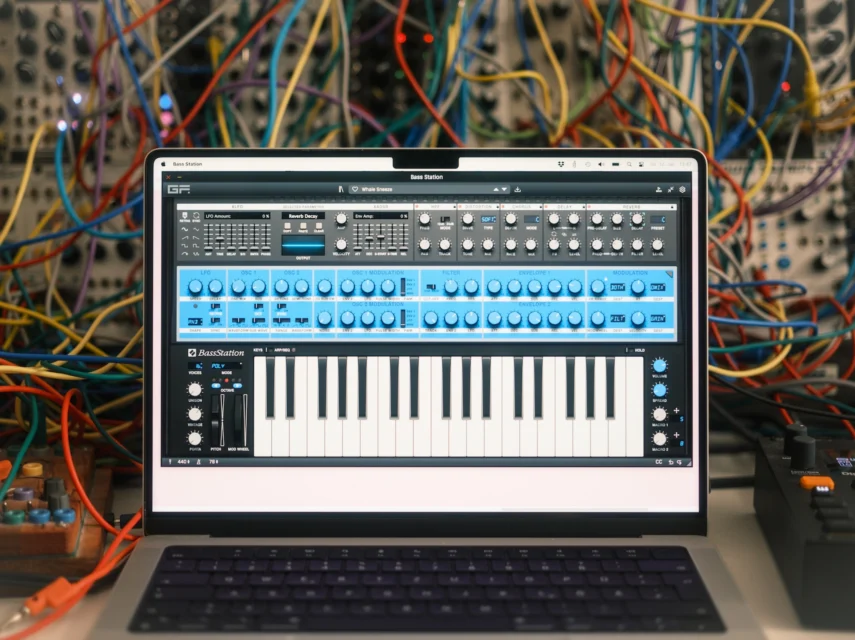February 10, 2025
by GForce Software
Hey there! In this article I will show you how I made Bird Watch, a demo track for the GForce Bass Station plugin. So grab a hot beverage and let’s talk about sound, composition and workflow.
Usually my music making is based on hardware instruments. I simply like the haptics – but more importantly the limitations they bring with them. So whenever I compose in a software environment, I like to pretend it’s actual gear on my desk. In case of this tune that meant I wanted to send it through my usual outboard mixing effects and also record it to 1/4“ tape. While this all is actually the very last step, I find it useful to keep it in mind along the way.
I also like to have reverb and delay active when composing or editing patches. To make my life easier, I used the effects inside the Bass Station for the entire composition phase and then only turned them off at the very end when I sent the whole arrangement out of the computer.
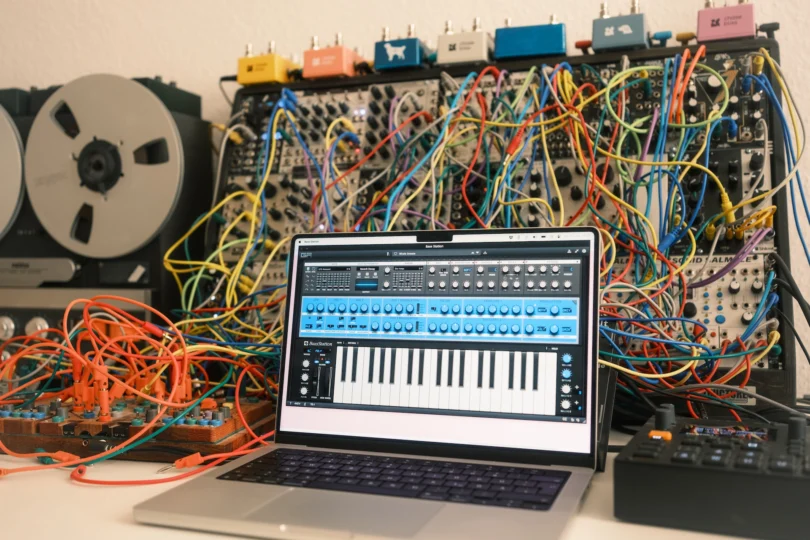
A tiny melody to lean on
My friends at GForce asked me to go for a total length of two minutes for this piece. Which made me aim for a more melodic piece compared to something drone heavy. So the first thing I did was to create a very simple melody that I could latch other elements onto. I used the preset Square on Square for that, with only a few minimal edits. Mainly I made the sound a bit thinner to leave more room for parts to follow. The melody itself is also rather stripped down for the very same reason. It’s just a pair of two-note chords alternating.
Background moods
Once I had the first melody playing, I started improvising other elements to it. To make things feel more alive I added two calm tracks that are unsynced to everything else. I wanted sounds with soft attacks and a somewhat noisy texture. Which made me land on the presets Glass Chamber and Whale Sneeze. Together they are meant to become one atmospheric glue in the context of this piece. I panned one a bit to the left, the other to the right. And as their midi clips have different (odd) lengths, they would basically play forever (or at least for a rather long time) before they repeat in the exact same way.
High frequency melody
As all sounds so far live in the mid-frequency range, the next step was to add a few notes that lie on top of them. The preset Giants Fall was a good candidate for that. I made a (yet again) simple breathy flute-ish melody that fills a sonic gap in the mix, if you will.
No arpeggiators, no problems
Now for the most important part of the track. A composition this short needs to draw the listener in right away. An arp-like sequence works great for that. With the one caveat that I strongly dislike arpeggiators. Even with swing and other settings, they still feel too robotic to me. So I tend to play arp-like sequences by hand. The slight wonk a human hand imprints on the sequence makes things much more alive, in my opinion. For the actual sound, I used the preset Whale Sneeze again, but changed the envelopes to make it more plucky.
The low end
The bass part on this piece is very simple. As I felt the track doesn’t need a true bass line, I just added a root note that swells in from time to time. Its main purpose is to warm up the track while not distracting from what else is going on. I used the preset Rectangular Feels, which isn’t purely a bass patch in the first place, but it worked well in this context.
Accents
The final part of the composition is a accent track that just plays one note in time with the arp-like sequence. It uses the preset Square on Square again, which is set up to shift notes in itself. So it alternates between two notes, even though only one is triggered. It’s a rather minimal part of the whole track but adds a bit of energy during its peak.
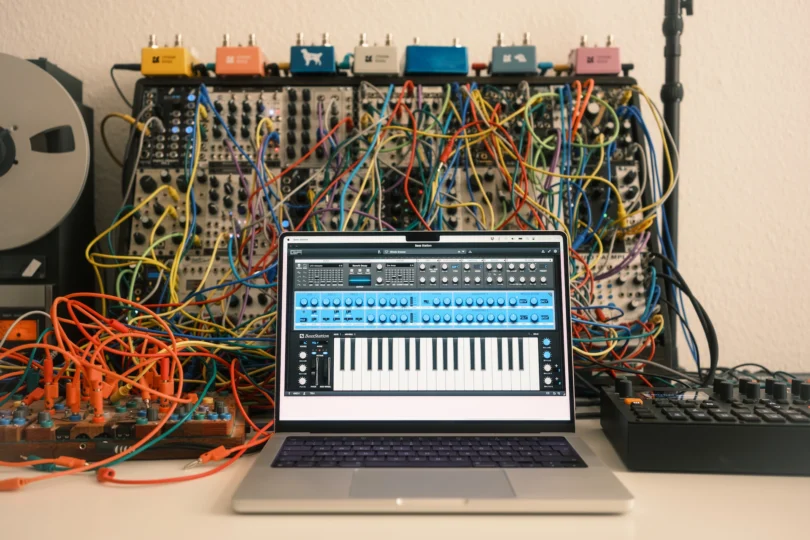
The arrangement
Once all elements were made, I just needed to bring them in order. As mentioned, I wanted the track to work quickly, so it starts with the Arp part. Followed by the first melody and the bass. And since it is a short composition, everything else but the accent track is being introduced within the first 45 seconds as well. The accent only appears for around 30 seconds in the second half of the composition.
I usually don’t use much automations aside from volume changes. My sounds already have a lot of subtle movement in the patches – and my music is calm and soft anyways. So I seldomly need more drastic automations to take place.
When the arrangement was done, I turned down the effects inside the plugins and sent everything to my mixer.
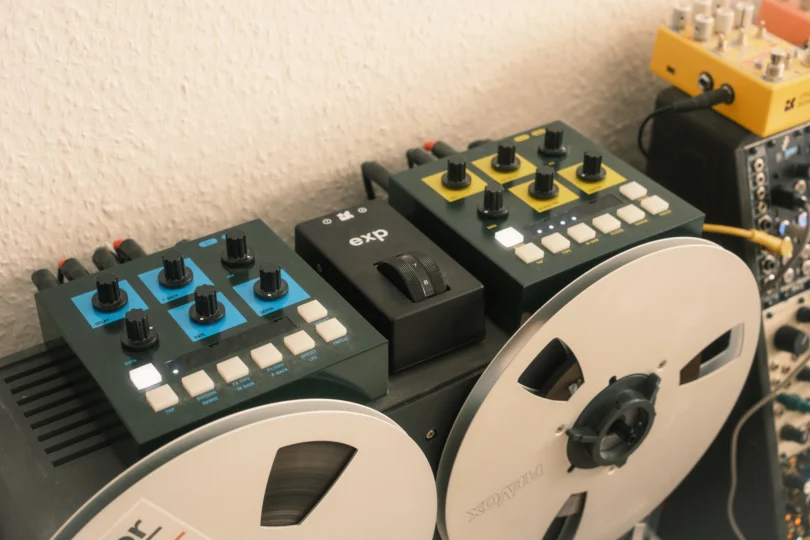
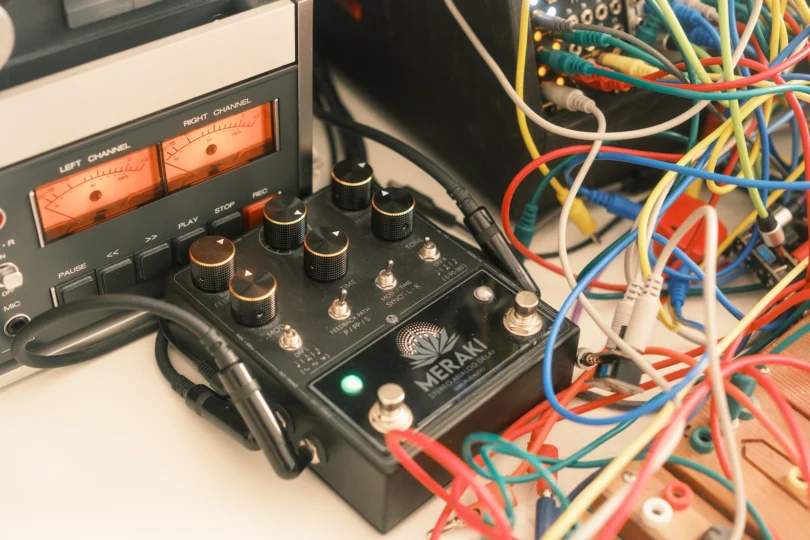
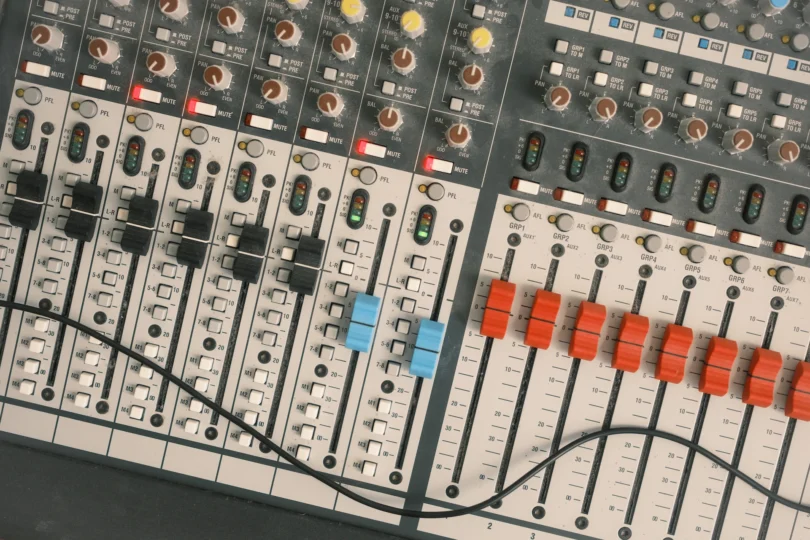
Outboard effects and tape
I generally don’t use too many effects in my music and my whole setup is rather classic, I guess. That means all my time based effects are on sends of my mixer and I simply dial in the amount of how much a sound should be affected by them. My delays are the OTO Bim and a Walrus Meraki, my reverb the OTO Bam. All of the sounds on this track went through all three of these boxes. The Bim and Bam I use as “traditional“ mixing effects to create a room for the sounds to live in. Both are present in the mix but not overpowering. The Meraki is mixed even lower. While it also is a delay, it is not in competition with the Bim. It rather creates a bit of a sonic goo through long delay times that fills gaps here or there.
That is all that is happening in terms of effects. The output of my mixer goes straight into my tape machine. I press play in Ableton, let the playhead wander through the arrangement, have my effects do their thing while I maybe adjust some parameters live – and the tape captures everything. I then re-record the tape back into Ableton and edit the stereo file with some EQs before I export it.
Not much more to say other than I hope you found this interesting and enjoy the sounds.
The final track:
More Info about Bass Station
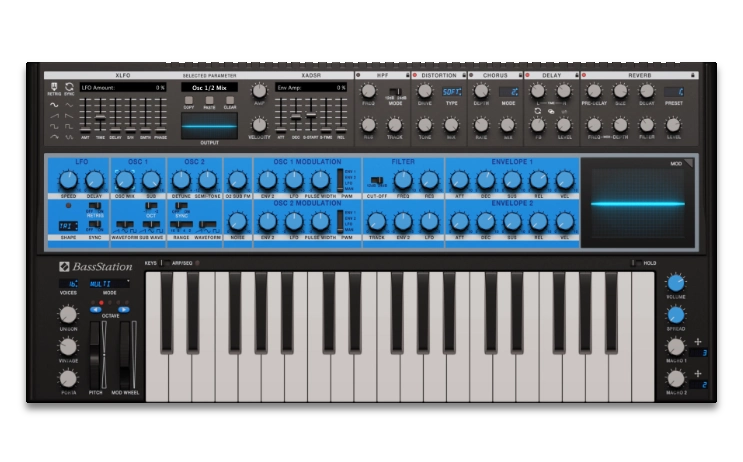
Novation Bass Station
More Info about Jogging House
I’m a synthesist and composer from Frankfurt, Germany trying to slow the world down a bit.
